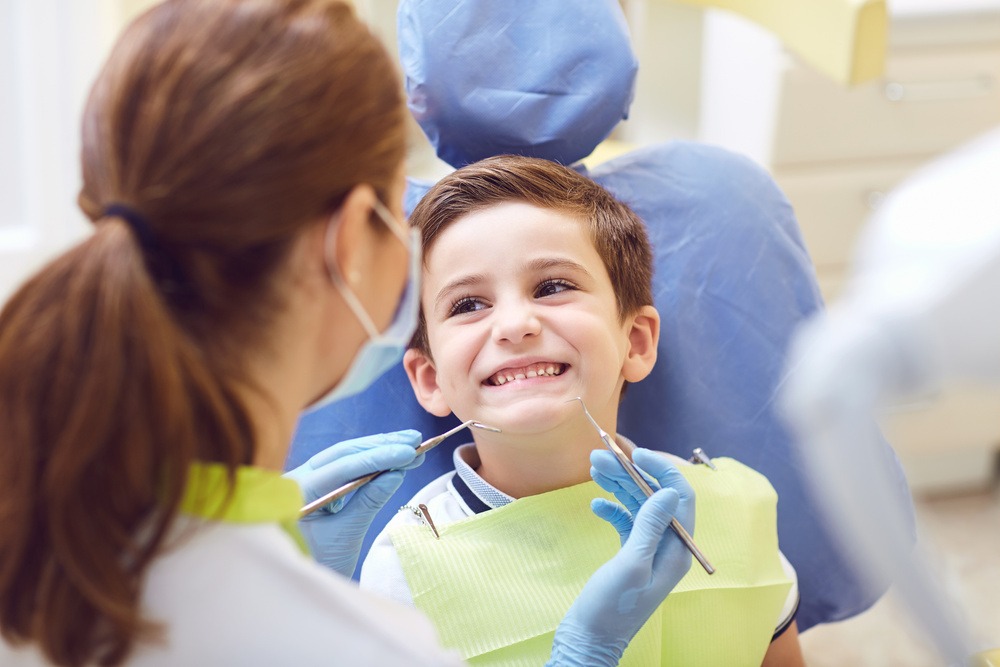A child’s teeth and oral health is essential for health and well-being. Taking care of baby teeth is crucial to the proper formation and arrangement of permanent adult teeth as they appear.
Thus, the best way to ensure this is take regular visits to a pediatric dentist. These are medical professionals who specialize in baby and children’s dentistry. They’re experts in administering various industry-developed treatments to manage and prevent common tooth conditions.
Here are six types of pediatric dentistry procedures for healthy teeth:

- Dental Cleaning
The most common dental procedure that children get is the regular dental cleaning that’s performed during the checkup. Just like adults, children need to get their teeth cleaned every half year as a preventative treatment against cavities and tooth decay.
As such, when it’s time to clean kid’s teeth, the pediatric dentist will scrape off tartar and plaque buildup between teeth and along the gumline using a scraper tool. This results in teeth that are more resistant to bacteria. The dentist could follow this up with an electric brush to keep the teeth polished.
- Fluoride Treatment
This is a type of preventative treatment to make a child’s teeth stronger and more resistant to acid and bacteria. It’s very useful in helping prevent or slow down tooth decay or cavities and is performed when the pediatric dentist recommends it. Furthermore, it can be done up to four times a year once the child’s first few teeth come out or after dental cleaning.
During this treatment, the dentist coats a fluoride varnish, gel, or foam over the at-risk tooth. Then the fluoride will harden once it comes in contact with the child’s saliva and stays on for about 12 hours. The amount of fluoride used is minimal and safe to use even if a small fraction is licked off and swallowed by the child.
- Fillings
Another frequent pediatric dental treatment is installing fillings in the premolar and molar teeth. This is because children are especially prone to getting cavities. These can be caused by the regular consumption of sweet, sticky, acidic snacks and drinks that contain starches and sugars that cling to teeth or erode enamel.
Furthermore, children are less aware of health than adults and might neglect proper brushing and flossing. Thus, the pediatric dentist can cover cavities if they appear. The procedure starts with numbing the tooth and drilling out the decayed area before a filling made of silver amalgam or ceramic porcelain is inserted.
- Extractions
In situations when cavities and tooth decay are severe, and a dental filling won’t suffice to save a child’s tooth, then a pediatric dentist will perform an extraction to remove it. Extractions can also be the best option when a child’s mouth is crowded with baby teeth or impacted, which could affect wisdom teeth eruption when a child reaches 17 years old.
Furthermore, extractions are commonly feared by children who fear going to the dentist due to the perceived pain they could experience and the intimidating tools used. However, children’s dentists are well-trained to perform the treatment as painlessly as possible while minimizing bleeding with numbing and precise pulling.
- Space Maintainer Installations
When a child loses their baby teeth prematurely due to an extraction or injury, they could have a space maintainer installed. These are metal devices glued onto the empty space left behind by the removed tooth and can be fixed onto one side of the mouth or looped with a band behind a row of teeth to keep them secure.
This procedure helps prevent the misalignment and overcrowding of permanent teeth when they start to erupt as the child grows. It does this by keeping baby teeth from growing into the gap.

- X-Rays
Dental X-rays are an important part of monitoring a child’s teeth development as they grow and their permanent or adult teeth emerge. The X-ray allows the pediatric dentist to examine the internal skeletal structure of a child’s individual teeth, jaw, and head. This makes it possible to look out for any problems that may not be detectable on a surface level such as root infections and lesions under the gum line for instance.
Dental X-rays produce a safe amount of radiation when capturing high-resolution images. Moreover, modern technology has developed digital X-rays that reduce almost all the radiation exposure to a traditional radiography film and make it easier to store the images online for efficient record keeping. A child can start receiving X-rays from 6-24 months old depending on how high the risk of complication is.
Conclusion:
The different types of pediatric dentistry procedures all have a common goal of ensuring children’s teeth are kept healthy as adult teeth emerge. This is done by cleaning, extraction, and installation treatments that strengthen teeth’s resistance to bacterial infection and decay.
Furthermore, some of the procedures are preventative measures to monitor or stop any conditions or complications that could arise in the future. All of this is necessary to safeguard and nurture a child’s oral health and wellness.
Hey welcome to my blog . I am a modern women who love to share any tips on lifestyle, health, travel. Hope you join me in this journey!

Speak Your Mind